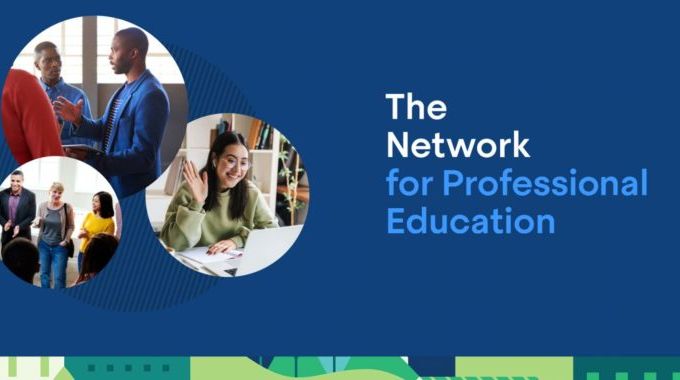Q&A with BU Global Programs’ Willis G. Wang

Digital learning initiatives are happening across the BU campus. This Q&A series highlights innovative ideas, collaborative thinking, cutting-edge perspectives and those leading the digital learning charge.
Since 1975, the Center for English Language & Orientation Programs (CELOP) has helped international students improve their English and understanding of U.S. culture. Students leave CELOP with advanced English language skills and are prepared for the demands of a U.S. university education.
In keeping with this mission, CELOP partnered with the U.S. Department of State and the Office of Digital Learning & Innovation's Instructional Production Services to develop an online English course for soldiers participating in United Nation's (UN) peacekeeping missions in Nepal.
Course development began in January 2019 and piloted in Nepal June 10 - July 22, 2019. The project was officially completed in August 2019 with a total of 25 videos produced.
DL&I connected with BU's Global Programs' Vice President and Associate Provost Willis G. Wang and members of the CELOP team including Managing Director Martina Mazaheri, Course Instructors Stephanie Ngom and Carol Piñeiro, and Educational Technologist Mitchell Wolf to discuss the course development process and benefits of production.
DL&I: What communications challenges do soldiers face, and why was it important to develop the UN Peacekeepers online English course?
Wang: English often serves as a common means of communication for peacekeeping forces during their deployments. English is used to communicate with interpreters, and with local militaries, government officials, and NGOs. Nepal is the 5th largest contributor to UN peacekeeping missions, yet there is no formal training in English available to these soldiers. This can make it difficult for them to interact with local populations and other security forces during their deployments. This led to the demand for this online English course, which soldiers complete over six weeks prior to their deployment as UN Peacekeepers.
DL&I: How did BU's Global Programs learn about these challenges?
Piñeiro: We learned about the need for English language training for Nepali peacekeepers from a U.S. Department of State representative who was working in Nepal. I was asked to go to Nepal for two weeks and do a needs assessment. The team put together a list of questions to ask, both quantitative and qualitative. We needed to know what the capabilities of the technology were such as bandwidth, computer availability, and familiarity of students with online courses. We also needed to know how old the students were, what their level of English was, and where the course would be delivered. I interviewed both top- and mid-level officers, who were enthusiastic about the creation of the course. I also spoke to retired officers who had been peacekeepers. The general response was overwhelming support for an English course that would help peacekeepers communicate with others on a mission.
DL&I: Please describe the overall goal of creating the online video courses.
Wang: The goals of this project were to improve the English language speaking, listening, reading, and writing skills of Nepali soldiers prior to their deployment as UN Peacekeepers. The course was delivered asynchronously online and through print materials, and all course material is open source to ensure the broadest possible access to content, even in relatively low-resource areas where this training may take place.
Watch the UN Peacekeepers course introduction video.
DL&I: Please describe the process of developing the course videos.
Wang: We designed a course structure that included individual lessons on reading, writing, speaking, and listening, and wanted each module to include multiple videos emphasizing each of those skills. So, for example, each module contains a Listening & Speaking video and a Reading video. We worked with Instructional Production Service (IPS) to develop video formats that would work well to deliver the content for each type of video, including interactive fill-in-the-blank style paragraphs for the Reading videos, and frequent “Repeat after me…” prompts in the Listening & Speaking videos. Once we had refined these formats for each video, we wrote the scripts based on the content of each module: Introductions and Greetings, Transportation and Logistics, Health and Sanitation, Incident Response, Borders and Checkpoints, and Patrols. Each video introduced and reinforced key vocabulary and phrases based on thorough research into peacekeeping operations and guidance from experts.
DL&I: What are the benefits of utilizing video for teaching and how does it enhance the learning process?
Wang: In this case, we knew that our target audience for the course would be young people, mostly in their 20s, with busy schedules that didn’t allow a lot of time for additional language training. It was important to make the course as engaging as possible so that they would be motivated to complete it, and the videos are a great way to do this. They make the course feel fast-paced, lively, and fun, and we think they really contributed to our high rates of participation and completion in the course pilot.
Watch the course video.
DL&I: Briefly describe your team’s overall experience. Would you recommend incorporating video into coursework?
Ngom: First of all, I’d like to say that working with IPS was a dream come true. After the hard work of doing research, writing, editing, rewriting, and putting the scripts into the correct format, recording was easy. We stepped in front of the camera at the production facility, the script started rolling, and we recorded the audio part of the videos. Of course, the production team then had to work hard on making the animations, placing text on-screen, and editing until a final product emerged. The videos made the course come alive, and without them, it wouldn’t have been as successful. Language courses should most certainly employ them, but all courses would benefit from having video scenes to spice up lectures or readings.
Our experience working with BU’s Instructional Production Services was phenomenal! Their professional team communicated with us each step of the way about how to create high-quality videos to make an interactive online course. They were very organized and efficient and were able to deal with a quick turnaround with the demands of our schedule. We highly recommend IPS for making any BU course better and more attractive for this tech-savvy population of students.
DL&I: When was the official course launch date?
Wang: The pilot ran from June 10 - July 22, 2019 at a training facility near Kathmandu, Nepal. We had 25 participants in the pilot, who completed the coursework at the training facility’s computer lab during the course of their multi-week UN pre-deployment training period. Of the 25 pilot participants, 22 completed the course successfully. We are very happy with this completion rate, since participation in the course was not mandatory. Feedback from the supervising officers and State Department personnel has been overwhelmingly positive and there are plans to expand the course’s audience to include Army and Police training in Nepal, as well as to peacekeeping forces training elsewhere in the world.
DL&I: What’s next for BU's Global Programs?
Mazaheri: Stephanie has made new videos for CELOP’s Bridge to BU that sparkle and invite conditionally accepted students to learn about university life before they arrive in Boston in September. Aside from the work that Stephanie already did on improving our Bridge to BU online program component, CELOP is looking into the possibility of taking some of our professional programs such as the pre-MBA program online and would most definitely appreciate an opportunity to work with IPS on such projects as well.
Learn more about Digital Learning & Innovation, or to schedule an appointment with the Shipley Center via shipdli@bu.edu.

About the Author: Maureen McCarthy was the Communications Manager for Boston University's Digital Learning & Innovation and editor of DL&I News at the time of publication.


